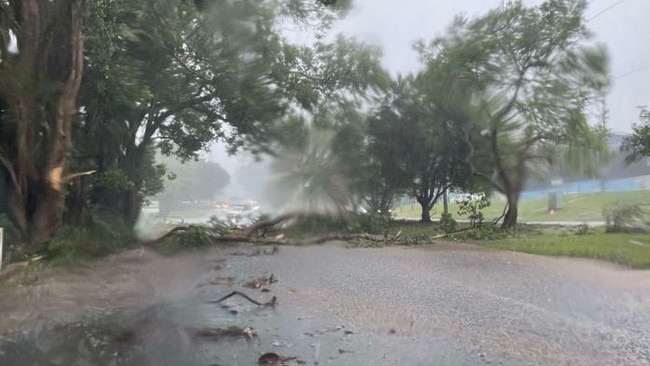Cyclones, fires floods: Qld in grips of high-risk storm season
Queenslanders are being warned to not ignore emergency warnings as the state is in the midst of a high-risk weather system season that could bring cyclones, fires and floods.
QLD News
Don't miss out on the headlines from QLD News. Followed categories will be added to My News.
Queensland is in the midst of a high-risk weather system season, with a greater threat of intense cyclones and risk of fires, flooding and severe storms in the coming months.
The Queensland Police Service (QPS), along with disaster management partners and several government agencies, have spent the entirety of this year preparing for natural disasters.
Queenslands State Disaster Coordination Centre (SDCC) operating within Queensland Emergency Services Complex in Kedron is set up to ensure information about an event is communicated to all levels of Queensland Disaster Management Arrangements (QDMA), including the Commonwealth.
Queensland has already seen the evacuation of two community towns due to bushfires while severe thunderstorms have ravaged parts of the state.
Queensland Police Deputy Commissioner and state disaster co-ordinator Shane Chelepy said now is the time to get ready.

“I have been told over 1.2 million hectares of land has already been burnt this year through our fire season, we saw fire threaten two regional community towns,” Mr Chelepy said.
“We also saw Mount Garner under threat two weeks ago. And this week we saw the town Forsayth under threat.”
Wind gusts of nearly 160km/h were recorded in Julia Creek and caused widespread damage on Monday.

“Twenty-five per cent of the houses in that community suffered some sort of damage from that storm. We saw the hospital damaged, the police station, the local kindergarten damaged. But we also seen a quick response by our emergency services,” Mr Chelepy said.
Queensland is the most disaster-prone state in Australia, the SDCC helps facilitate disaster management for significant events, not limited to flood, storms and cyclones.
Mr Chelepy said Queensland has never been more prepared and has learnt from previous years.
Queensland agencies have been particularly focused on improving their collective response to a tropical cyclone, such as the events of Tropical Cyclone Kirrily and Jasper seen last summer.

“Every year we do review of our disaster season, and we did a review of last season, we had dual events happening in the north and the south at the same time. I feel that the lessons from that have been built into this year already,” Mr Chelepy said.
“The early Bureau of Meteorology (BOM) modelling indicates we could experience four cyclones this season, with at least two of them likely to cross the coastline.”
But has raised concerns over Queenslands disconnect in reacting to warnings put out by emergency services.
“It is quite concerning, I know that we do live in a high impact state. We are the most disaster prone state in Australia, as a result, our community do get a lot of warnings, they get a lot of message, like the messages we’re giving today to prepare,” he said.
“Every year, police and emergency services have to go and inform family members that a loved one has been lost through an incident such as driving through flood water, and it’s devastating to us as emergency service workers, but it’s more devastating to the families.”
Weather bureau senior meteorologist Kimba Wong said the long-range forecast for this season favoured warmer days and nights across the state, increased risk of heatwaves, and average to above-average rainfall with an increased risk of flooding for parts of eastern catchments.
It comes as Wednesday night sent down more than 215,000 lightning strikes and left 1700 homes and businesses without power.
“We certainly have had a very active storm season across South East Queensland,” she said.
“We did see rainfall totals in certainly a very short period of time, exceeding 50mm in an hour, and that was at a number of sites across Brisbane and the south east.”
An Energex spokesperson said from early September to November 14 last year 780,000 lightning strikes were recorded from the South East Queensland, in the same period this year 2.1 million had been recorded.

Ms Wong warns that at least one of the several cyclones forming in our regions will make landfall with a stronger intensity this season.
“Typically around the Queensland area, we see about four tropical cyclones in an average year, one of which always makes landfall,” Ms Wong said.
“Its really important to note the oceans around Australia and more broadly around the globe are very warm at near record levels, and this is the energy source that cyclones use.”
“So when a cyclone does form, there is a greater risk that will see severe tropical cyclones this season.”


